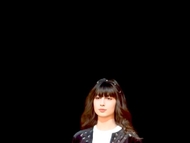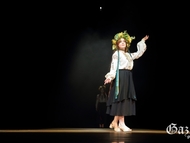Last May, the actress Kim Hye-soo apologized after acknowledging that she had committed plagiarism. Last October, a professor at Joongang University who plagiarized a students’ paper resigned. In the same month, the son of the dean of the Medical School at Hanyang University went to the graduate school of Hanyang University Medical School with plagiarized papers. When it was revealed to the public, the son dropped out of graduate school and his father resigned to take responsibility for his son’s mistake. These plagiarism controversies by celebrities have continued since 2007. It means Korean society has little understanding of plagiarism. However, if someone plagiarizes, it is not a trivial issue. We need to think about this situation more seriously.
Plagiarism is copying another person’s work, such as ideas, article, or photography, without the original author’s agreement and without specifying the source. It is a flagrant violation of the principle of citation. Plagiarism can be divided into four categories. Idea plagiarism is borrowing another person’s idea. Text plagiarism is copying another person’s text without quoting the source. Mosaic plagiarism is copying bits of texts from several sources by changing a few words without quoting. Distortion of ideas is distorting another person’s words or ideas. These actions infringe the author’s intellectual property right.
Some countries emphasize plagiarism through education from an early age. In the USA, the UK, and France, education is focused on expressing one’s thinking. Through this education, students know that an individual’s thoughts are different from every other individual’s thought. At the same time, students receive systematic plagiarism education. Therefore, students come to know that plagiarism is wrong. In contrast, Korea’s education doesn’t put emphasis on plagiarism. Therefore, the students need to learn about plagiarism.
In addition, society doesn’t allow plagiarism. People who commit plagiarism are excluded from the academic world. In 2000, the US Office of Science and Technology Policy released federal guidelines for research misconduct. It is the US government’s measure to eradicate plagiarism. This measure raised American citizens’ awareness of plagiarism. In 1997, Germany also had a lot of controversy because many scholars had plagiarized papers like Korea. Since then, the German government has made provisions for plagiarism through the Max Plank Gesellschaft institutes. Now, the German government doesn’t provide any research funds to research institutions which break the provisions.
Now, the government of Korea and many universities are trying hard to prevent plagiarism. About 40 universities including Dongguk University and KAIST and more than 50% of research institutes that are under the Korean government are using the plagiarism program “Copy Killer.” Moreover, Seoul University, Joongang University, and Hanyang University have organized a committee for authentic research. The committee’s role is to compare new papers with existing papers.
The government and universities are making efforts to prevent plagiarism, which is a positive sign for Korean academia. However, the government should make a social system that can prevent plagiarism and punish it to eradicate the fundamental problem. Korea’s National Assembly is working to recheck and strengthen existing laws about plagiarism. In addition, universities and academic society must provide guidelines on research that correspond to the era of globalization. These organizations and the government must make every effort to eradicate plagiarism.








